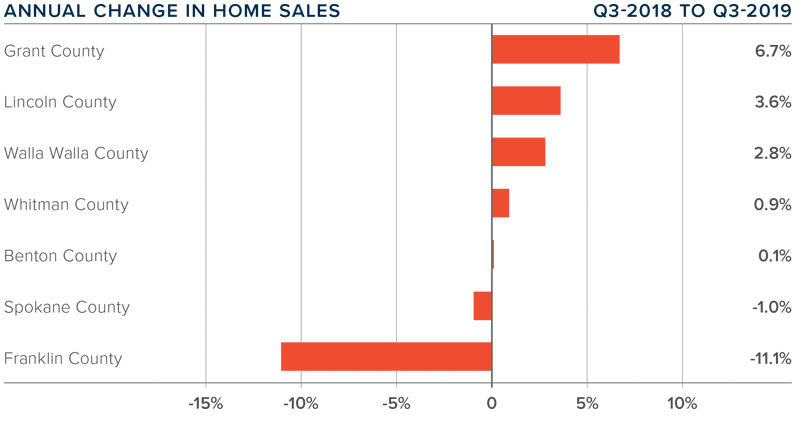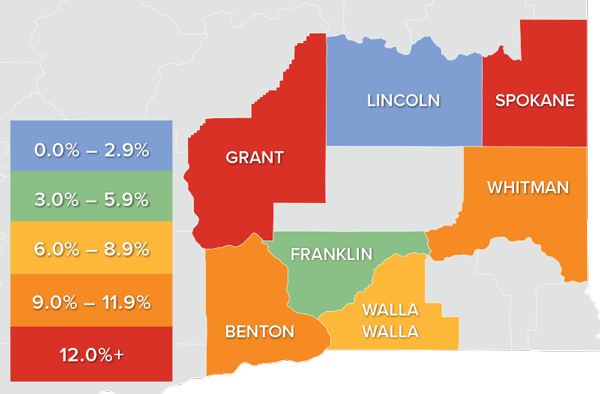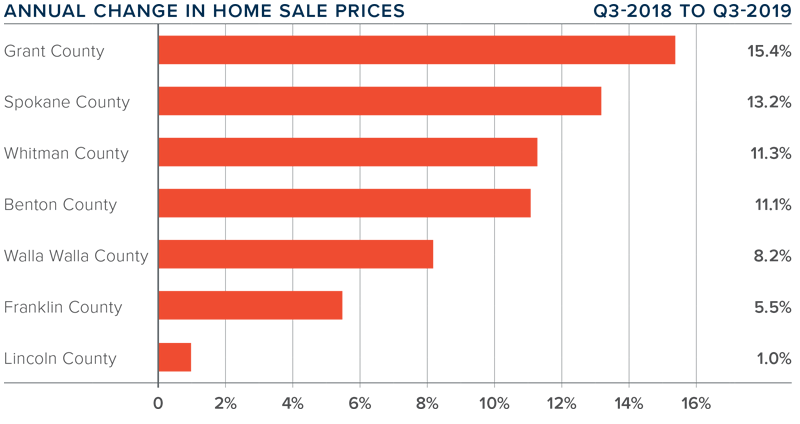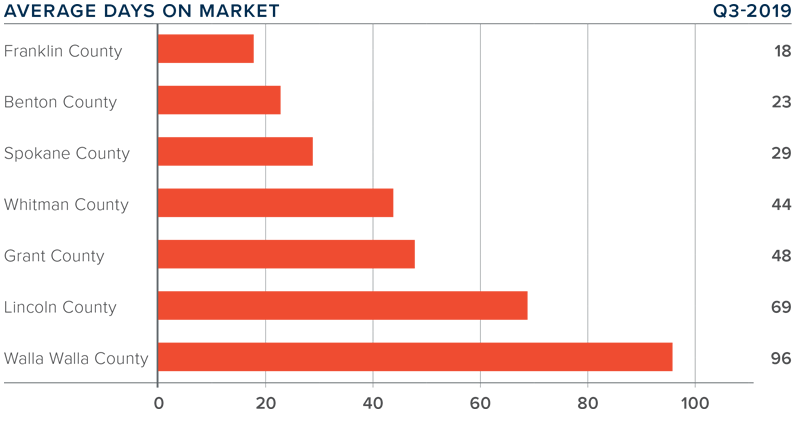The following analysis of the Eastern Washington real estate market is provided by Windermere Real Estate Chief Economist Matthew Gardner. We hope that this information may assist you with making better-informed real estate decisions. For further information about the housing market in your area, please don’t hesitate to contact your Windermere agent.
ECONOMIC OVERVIEW
Washington State employment has softened slightly to an annual growth rate of 2%, which is still a respectable number compared to other West Coast states and the country as a whole. In all, I expect that Washington will continue to add jobs at a reasonable rate, but it’s clear that businesses are starting to feel the effects of the trade war with China and this is impacting hiring practices. My most recent economic forecast suggests that statewide job growth in 2019 will rise by 2.2%, with a total of 88,400 new jobs created.
The state unemployment rate last quarter was 4.6%, marginally higher that the 4.4% level of a year ago. The Eastern Washington market added 14,588 total jobs over the past 12 months, representing an annual growth rate of 3.1%. That said, and even as the region added jobs, the unemployment rate rose to 5.6% from 4.7% a year ago. This does not worry me though, as the county data is not seasonally adjusted, and the areas covered by this report tend to see unemployment rates rise as we approach the winter months.
HOME SALES
- Home sales throughout Eastern Washington were down by a modest .5% compared to the same quarter in 2018, with a total of 4,176 closed sales.
- Pending home sales in the region were 16% higher than second quarter, suggesting that fourth quarter closings will likely be higher.
- The drop in home sales was driven by Franklin and Spokane counties, while all other counties covered in this report saw sales rise.
- The average number of homes for sale in the quarter was 16.6% lower than a year ago, suggesting that the market remains very tight. I do not anticipate a significant increase in listings until next spring.

HOME PRICES
 Year-over-year, the average home price in Eastern Washington rose by a significant 12.1% to $303,658. Prices were also 3.4% higher than in the second quarter.
Year-over-year, the average home price in Eastern Washington rose by a significant 12.1% to $303,658. Prices were also 3.4% higher than in the second quarter.- As mentioned in the previous section, low inventory levels are pervasive and are likely the most significant hurdle to many home buyers. Low inventory continues to put upward pressure on prices.
- Prices rose in all counties contained in this report, with Benton, Whitman, Grant, and Spokane counties showing double-digit price gains.
- The takeaway is that average home-price growth in Eastern Washington remains well above the long-term average.

DAYS ON MARKET
- The average time it took to sell a home in Eastern Washington in the third quarter of 2019 was 47 days.
- During the third quarter, it took the same number of days to sell a home in Eastern Washington as it did a year ago.
- The regional market was split: it took longer to sell homes in Lincoln and Walla Walla counties, but days on market dropped in Grant, Spokane, Benton, Whitman, and Franklin counties.
- It took five fewer days to sell a home in the third quarter than it did in the second quarter of this year.

CONCLUSIONS
 This speedometer reflects the state of the region’s real estate market using housing inventory, price gains, home sales, interest rates, and larger economic factors.
This speedometer reflects the state of the region’s real estate market using housing inventory, price gains, home sales, interest rates, and larger economic factors.
Home sales are up and so are prices, which certainly favors sellers. However, mortgage rates remain remarkably competitive and this is allowing buyers to afford more house for their money. Inventory levels are still well below what I would like to see and, therefore, the Eastern Washington housing market remains very tight. As such, I am moving the needle just a little more in favor of home sellers.
ABOUT MATTHEW GARDNER
 As Chief Economist for Windermere Real Estate, Matthew Gardner is responsible for analyzing and interpreting economic data and its impact on the real estate market on both a local and national level. Matthew has over 30 years of professional experience both in the U.S. and U.K.
As Chief Economist for Windermere Real Estate, Matthew Gardner is responsible for analyzing and interpreting economic data and its impact on the real estate market on both a local and national level. Matthew has over 30 years of professional experience both in the U.S. and U.K.
In addition to his day-to-day responsibilities, Matthew sits on the Washington State Governors Council of Economic Advisors; chairs the Board of Trustees at the Washington Center for Real Estate Research at the University of Washington; and is an Advisory Board Member at the Runstad Center for Real Estate Studies at the University of Washington where he also lectures in real estate economics.
 Facebook
Facebook
 X
X
 Pinterest
Pinterest
 Copy Link
Copy Link



